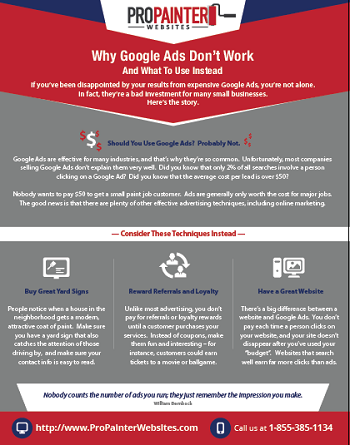Understand How Seasonal Conditions Influence The Success Of Commercial Exterior Painting And Learn The Ideal Periods To Assure Resilient End Results For Your Task
Understand How Seasonal Conditions Influence The Success Of Commercial Exterior Painting And Learn The Ideal Periods To Assure Resilient End Results For Your Task
Blog Article
Web Content Created By-Burnham Skafte
When you're intending a commercial exterior painting task, seasonal aspects can make or damage your results. You'll want to consider how temperature and humidity effect paint application and drying times. Selecting the ideal season can ensure your paint adheres correctly and lasts longer. However which seasons are absolutely the best for this kind of job? Let's discover the crucial elements that can impact your job's success.
The Effect of Temperature Level on Paint Application
When you're preparing an industrial outside painting task, the temperature can significantly impact exactly how well the paint sticks and dries.
Ideally, you want to paint when temperatures vary between 50 ° F and 85 ° F. If it's also cold, the paint may not treat appropriately, bring about problems like peeling off or splitting.
On the other hand, if it's also hot, the paint can dry as well quickly, avoiding proper adhesion and causing an irregular coating.
You should also consider the time of day; morning or late afternoon supplies cooler temperature levels, which can be more favorable.
Constantly examine the producer's suggestions for the specific paint you're making use of, as they typically offer advice on the perfect temperature level range for optimum results.
Humidity and Its Result on Drying Times
Temperature level isn't the only ecological aspect that influences your business external paint project; humidity plays a significant role too. High humidity levels can slow down drying out times considerably, affecting the overall top quality of your paint work.
When the air is saturated with wetness, the paint takes longer to heal, which can bring about concerns like poor bond and a greater risk of mold growth. If you're repainting on a specifically moist day, be planned for extensive delay times in between coats.
It's vital to check regional weather conditions and strategy accordingly. Ideally, go for moisture levels between 40% and 70% for optimum drying out.
Keeping these factors in mind ensures your job remains on track and delivers a long-term surface.
Best Seasons for Commercial Exterior Painting Projects
What's the very best time of year for your industrial external paint jobs?
Springtime and early autumn are normally your best options. Throughout these periods, temperature levels are light, and moisture levels are typically reduced, creating excellent problems for paint application and drying out.
Prevent summer's intense heat, which can cause paint to dry as well rapidly, bring about poor bond and finish. Likewise, winter months's cool temperatures can impede appropriate drying out and curing, taking the chance of the longevity of your paint job.
Aim for days with temperatures between 50 ° F and 85 ° F for optimum outcomes. Remember to check the local weather report for rainfall, as wet conditions can wreck your job.
Preparation around these variables ensures your painting task runs smoothly and lasts longer.
Conclusion
Finally, preparing your industrial outside painting jobs around seasonal considerations can make a significant difference in the result. By scheduling work during the optimal temperature levels and humidity levels, you'll make certain much better attachment and drying times. paint price per square foot in mind to keep an eye on regional weather prediction and select the right time of year-- spring and very early fall are your best choices. Taking these steps will certainly assist you achieve a sturdy and expert coating that lasts.
